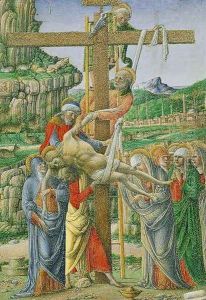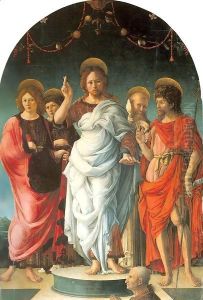Girolamo Da Cremona Paintings
Girolamo da Cremona was an Italian miniaturist and manuscript illuminator active during the Renaissance period. Not much is known about his early life, including his exact birth and death dates. Historical records indicate that he was active from around 1451 to 1483. He was named after his place of origin, Cremona, a city in Lombardy, Italy. Girolamo's work represents the transition from the Gothic style of the Middle Ages to the emerging Renaissance style, reflecting the increasing interest in naturalism and the use of perspective.
During the 15th century, the art of manuscript illumination was highly regarded, and Girolamo da Cremona became one of its most celebrated practitioners. He was known for his vibrant use of color, intricate designs, and the incorporation of architectural and landscape elements that were innovative for his time. He worked for several patrons across Northern Italy, including in cities such as Venice, where the demand for luxury manuscripts was growing among the wealthy and educated classes.
Girolamo's most notable works include his contributions to the illumination of choir books and other liturgical texts. He often collaborated with other artists, such as his contemporary Taddeo Crivelli, with whom he worked on the illumination of the 'Bible of Borso d'Este,' one of the period's most lavishly decorated manuscripts. This work is particularly noted for its sumptuous borders filled with flora and fauna, as well as detailed scenes from the Bible and classical mythology.
Despite the importance of his work, Girolamo da Cremona's life is not well-documented, and there is little information about his training or personal life. It is believed that he died sometime after his last known commission, but the exact year of his death remains uncertain. His legacy, however, is preserved in the exquisite pages of the manuscripts he illuminated, which are held in various collections and libraries around the world. Through these works, Girolamo da Cremona has earned a lasting place in the history of Renaissance art.

